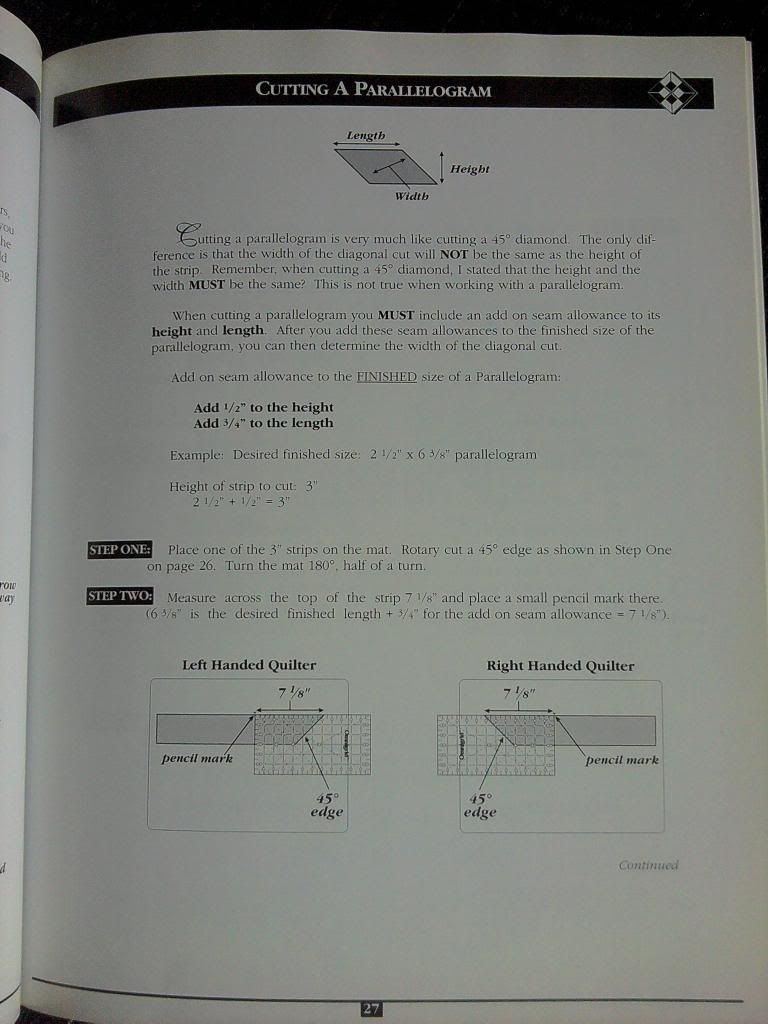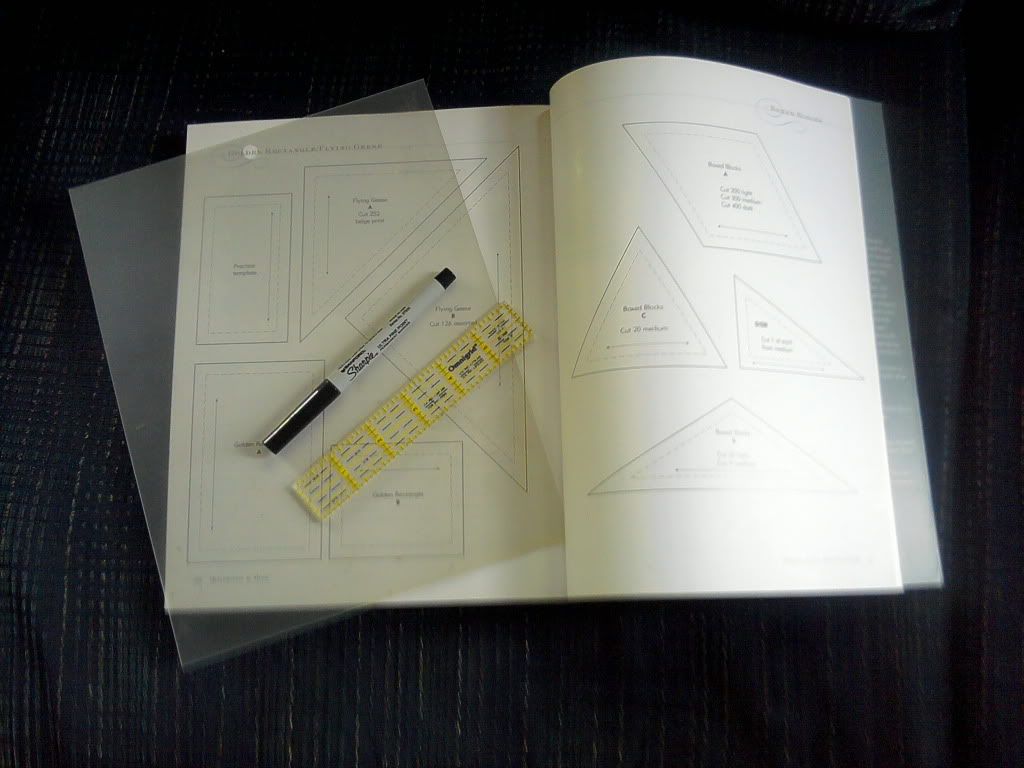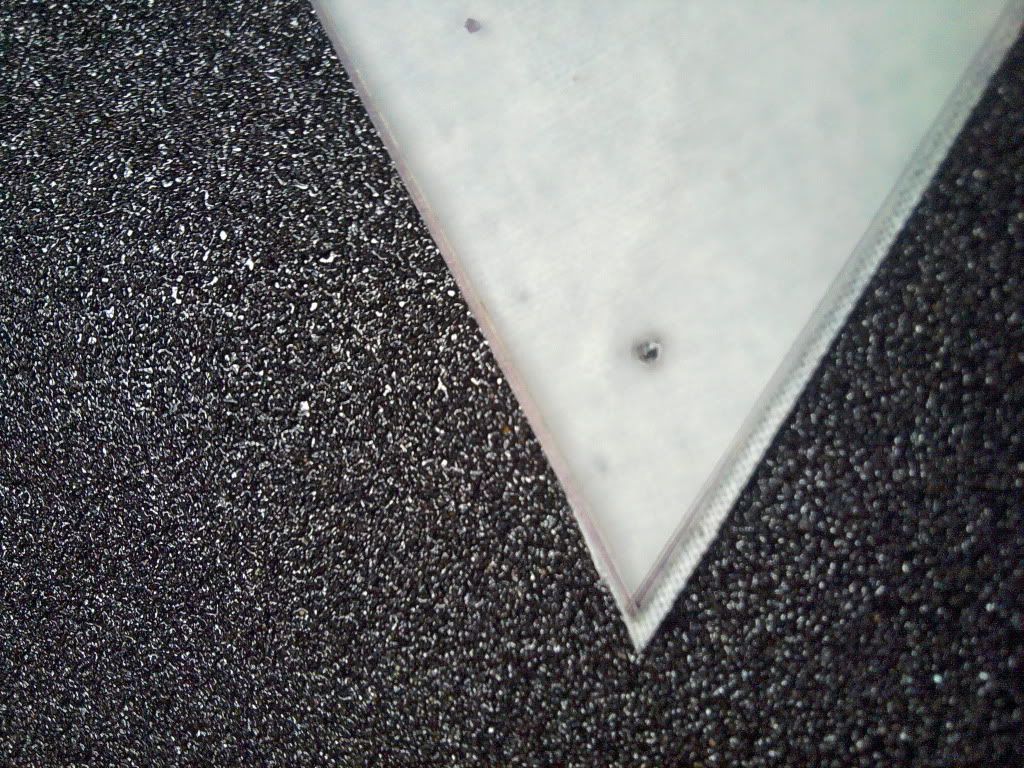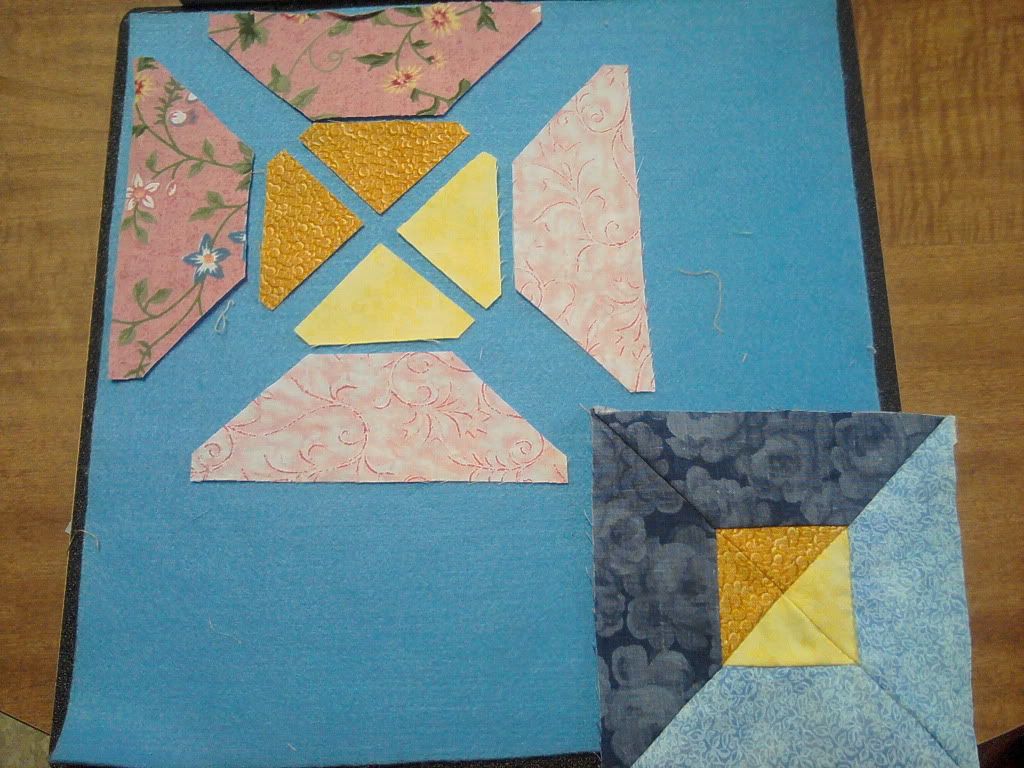Transitioning from a pattern and fabric to pieces ready to sew is a fairly simple process. This skill is easiest to learn when you see it, though. This method is one I discovered on Candy Goff's quilting site years and years ago. It's worked very well for me, so I'm passing it on to you.
 | |
| Pre-made template patterns are common if you choose a block from a book or magazine. If you draft your own template patterns, remember to include both a sewing and a cutting line. |
 | |
| Using a razor knife, mat, and straight edge or precision craft scissors carefully cut out the templates. Double check the finished template by overlaying it on the paper pattern. |
 | |
| Use an ice pick or awl to drill holes for the match points and sewing lines. |
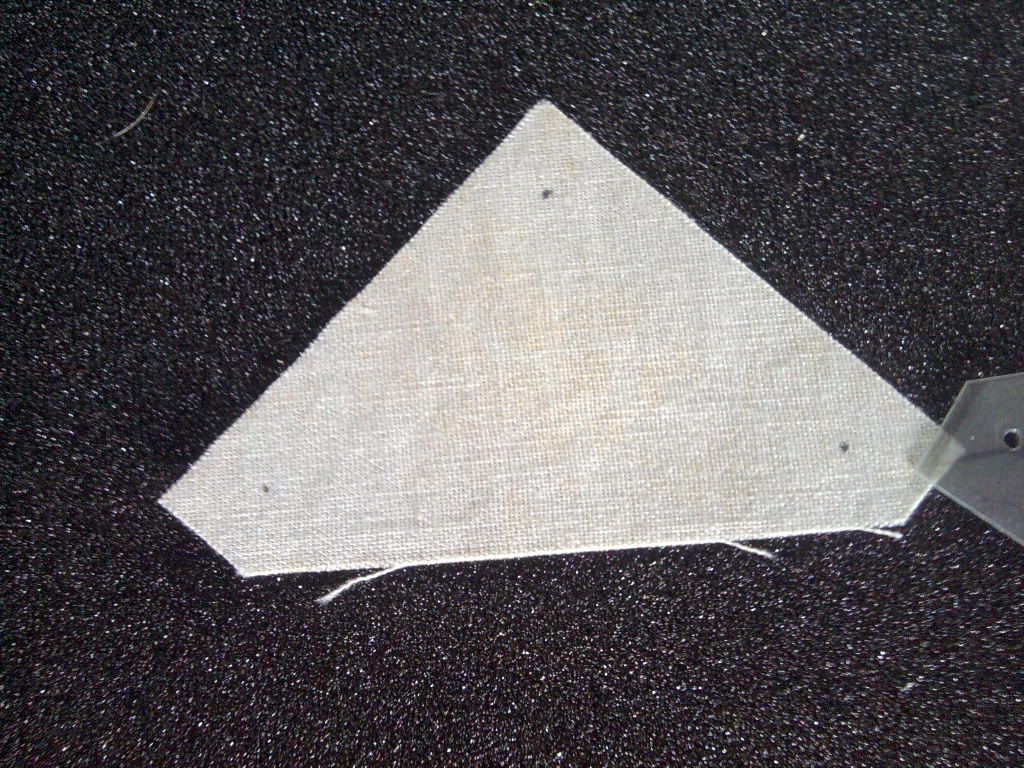 |
| Cut out the piece just inside the chalk or pencil line. Mark the match points using the holes you drilled in the template earlier. Don't mark the sewing line yet -- we'll be doing that as we go. |
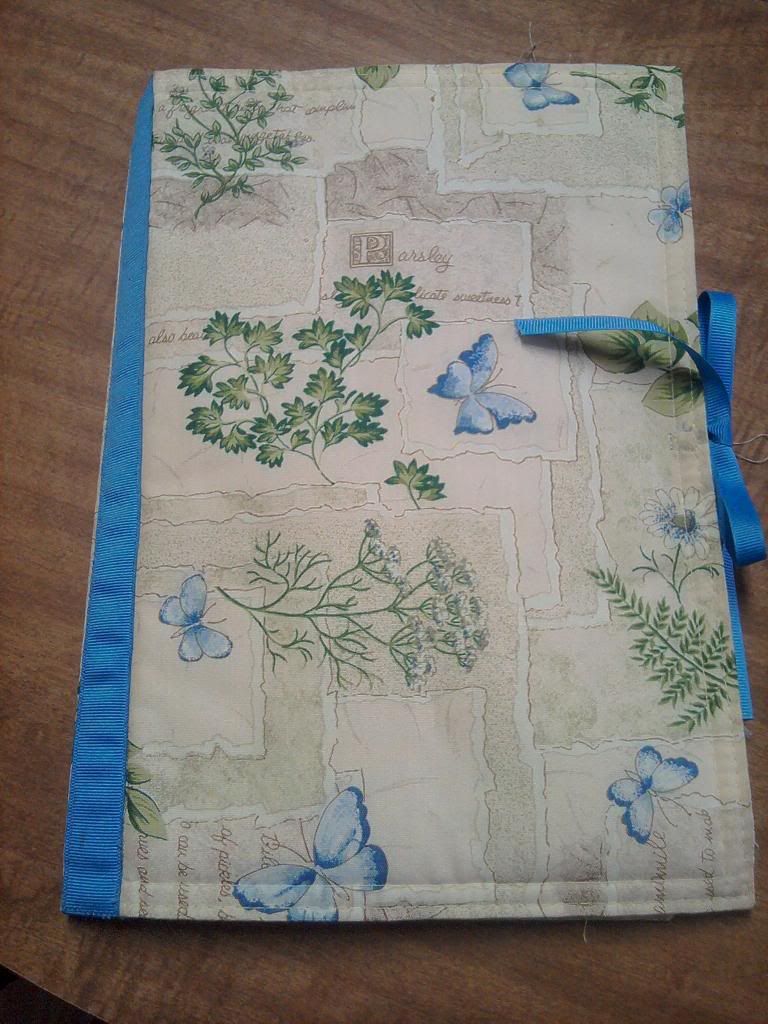 | ||
| Tied shut, this simple carrier is only as thick as the grosgrain ribbon I used to hide the seams. It slides easily into my project bag. |
Well that wasn't too bad, was it? Be careful and take your time with the templates, and don't stress over the cut edges of the fabric. Carefully mark match points, and store your pieces so you can sew in odd moments. Unlike "designer" quilting, scrap quilting gives you the freedom to cut as you go -- there's no danger of running out of fabric.
Sew in Love with you,
Momma
Linked Up at Homestead Barn Hop #112

